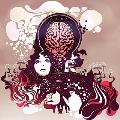
DMT-Nexus member
Posts: 48 Joined: 14-Sep-2013 Last visit: 09-Apr-2014 Location: Uncertain
|
|
|
|
|
|

DMT-Nexus member
Posts: 48 Joined: 14-Sep-2013 Last visit: 09-Apr-2014 Location: Uncertain
|
Where'd all the neuroscientists go? 
|
|
|

DMT-Nexus member
Posts: 503 Joined: 11-May-2013 Last visit: 29-Nov-2020
|
It's a bit over my head but still looks promising! I suppose any 5-HT2A agonist would have similar effects (though perhaps not with the potency of DOI).
|
|
|

DMT-Nexus member
Posts: 48 Joined: 14-Sep-2013 Last visit: 09-Apr-2014 Location: Uncertain
|
They do in vitro http://jpet.aspetjournal...g/content/327/2/316.longThey tested LSD among other analogs. They weren't as effective, but still pretty potent.
|
|
|

DMT-Nexus member
Posts: 14191 Joined: 19-Feb-2008 Last visit: 22-Nov-2025 Location: Jungle
|
Thanks for posting!
Maybe edit the thread subject title to briefly sum up the contents, otherwise many people might miss it.
Also if you post some of your thoughts and questions related to the paper, it might serve to promote the discussion. For example, why do you think it is "really important" ?
It seems from their conclusions that it can serve for diminishing inflamation related to atherosclerosis and those of the intestine like with irritable bowel syndrome. Though in the first case the dose they were mentioning (0.3mg/kg) would be an extremely high dose in humans, possibly dangerous, so I can`t see how that would work (and it is also in contradiction with the last part of their conclusions).
Another interesting thing they mentioned in the paper is that DOI regenerated the liver and that it had antiinflamatory effect on the lungs. I wonder if all those things are specific to DOI or related to all 5HT2a agonists, and how does that translate to the potential therapeutic effect in the commonly used dosages of psychedelics.
|
|
|

DMT-Nexus member
Posts: 48 Joined: 14-Sep-2013 Last visit: 09-Apr-2014 Location: Uncertain
|
I meant to post a brief description but didn't have time until now. Anyways, I think you may have misunderstood the dose range. I'm fairly certain they keep the relative dose below what we would call "threshold", (i.e. you won't really trip) for the sake of making an argument that this application has medical value. When dealing with mice, scaling up mg/kg doesn't quite work. I think it's actually a logarithmic function, but don't quote me on that. I'll have to go back through and re-read to make sure, but an ultra-high dose seems counterproductive for what they argue, which is a therapeutic application for an unscheduled psychedelic compound.
The one thing that kills me is that they didn't do any long term studies. It wouldn't be much work at all. You could just give mice a weekly injection of DOI and run the gauntlet of behavior tests for anxiety, depression, memory, ect. I think we all know that the benefits likely happen post-dose as much as they do in the midst of it.
The connection they don't make is the one for headaches, which is a type of inflammation. I think there is plenty of non-academic (but valuable) evidence out there to support this in humans as well.
|
|
|

DMT-Nexus member
Posts: 48 Joined: 14-Sep-2013 Last visit: 09-Apr-2014 Location: Uncertain
|
The other cool thing is that they focus on the physiology in the periphery, rather than what's going on in the CNS, which is something people often ignore with this class of compounds.
|
|
|

DMT-Nexus member
Posts: 48 Joined: 14-Sep-2013 Last visit: 09-Apr-2014 Location: Uncertain
|
Yeah, 0.3 mg/kg is considered threshold dose in mice.
"The highest dose we used, 0.3 mg/kg, is equal to the minimal dose needed to produce discrimination in the sensitive two-lever drug discrimination behavioral assay of 0.3 mg/kg [13]."
|